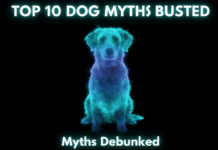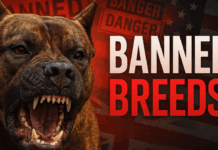Last Updated on September 28, 2024 by Dogs Vets
All You Need to Know About the French Bulldog
The French Bulldog is a small, muscular breed known for its distinctive “bat ears” and charming personality. Despite their small size, Frenchies have a big presence, exuding affection and playfulness.

This breed is particularly well-suited for a variety of lifestyles, whether you are single, a couple, or a family. They are adaptable and love companionship, thriving on human interaction and getting along well with other animals.
| Characteristic | Details |
|---|---|
| Other Names | Bouledogue Français, Frenchie |
| Origin | France |
| Life Expectancy | 10 – 12 years |
| Temperament | Easygoing, Affectionate, Lively, Sociable, Patient, Playful |
| Colors | Brindle, Fawn, White, Tan, Cream, Pied |
| Scientific Name | Canis lupus familiaris |
| Adult Weight | 18 – 28 lbs (8 – 13 kg) |
| Adult Height | 11 – 13 inches (28 – 33 cm) |
| Popularity | Most popular dog breed in the U.S. as of 2024 |
Physical Appearance
French Bulldogs are known for their compact, muscular bodies and smooth, short coats. Their heads are large and square with heavy wrinkles, especially around their short noses. Frenchies are also recognized for their alertness and make excellent watchdogs, even though they don’t bark much.
Temperament and Personality
French Bulldogs are cheerful and easygoing dogs. They are affectionate and form close bonds with their owners. Due to their keen senses, they are highly alert, which makes them good at noticing things around them.
However, they are not overly energetic, making them ideal for apartment living or households that don’t have a lot of space. Their friendliness extends to humans and other pets alike.
Exercise and Training
Despite their small stature, Frenchies benefit from daily short walks or play sessions. Over-exertion should be avoided due to their brachycephalic (short-nosed) structure, which can lead to breathing difficulties in hot or humid weather.
French Bulldog Pug Mix

The Frenchie Pug mix, also known as the Frenchie Pug or “Frug,” is a hybrid breed created by crossing a French Bulldog with a Pug. These dogs inherit traits from both breeds, including their small size and playful personalities. They often have a curled-up tail, typical of Pugs, but may also show the signature bat ears of the Frenchie.
History of the French Bulldog
The origins of the French Bulldog trace back to ancient Greece, where the Molossian dogs were popular among the Greek tribe. Through centuries of development, the bulldog was used in England for blood sports like bull-baiting until they were outlawed in 1835.
By the mid-1800s, smaller Bulldogs known as Toy Bulldogs became popular, particularly in France. French breeders refined the breed further, giving rise to the modern French Bulldog, also known as the Bouledogue Français. This breed became popular among society’s elite and even artists like Edgar Degas and Toulouse-Lautrec.
Top 10 Types of French Bulldogs
1. Fawn French Bulldog

The fawn-colored Frenchie displays a range of shades from cream to reddish-brown. They often have a black mask around their face.
2. Brindle French Bulldog

Brindle Frenchies feature a mix of dark and light streaks in their coats. The brindle pattern is caused by the agouti gene.
3. Tiger Brindle French Bulldog

Tiger Brindle is a more distinct version of the traditional brindle pattern, with clearer stripes resembling a tiger’s coat.
4. White French Bulldog

White Frenchies have a soft, cream-colored coat and dark pigmentation around the nose, lips, and eyes. This color can sometimes be linked to hearing issues.
5. Pied French Bulldog

Pied French Bulldogs have predominantly white coats with darker patches on their bodies, often around the eyes or ears.
6. Lilac French Bulldog
View this post on Instagram
Lilac Frenchies are rare and result from specific gene combinations. They have a pale purple or silver-toned coat.
7. Pure Black French Bulldog
View this post on Instagram
Though not recognized by the AKC for show purposes, pure black Frenchies are stunning. Their solid black coat is the result of a recessive gene.
8. Cream French Bulldogs
These Frenchies have a creamy coat due to a recessive gene that dilutes the fawn coloration.
9. Chocolate French Bulldog

Chocolate-colored French Bulldogs are rare and striking. This color requires both parents to carry the recessive chocolate gene.
10. Sable French Bulldog

Sable Frenchies have a light brown to dark mahogany coat with black-tipped hairs that create a shaded look.
Price of a French Bulldog
The price for a French Bulldog typically ranges from $1,500 to $3,000, but dogs with superior pedigrees can cost between $5,500 and $10,000. Prices for rare colors like lilac or chocolate may be even higher.
Diet and Nutrition
A balanced diet is essential for keeping French Bulldogs healthy. High-quality dog food tailored to their age is recommended. Frenchies are prone to obesity, so their caloric intake should be monitored to prevent health issues.
Grooming and Coat Care
French Bulldogs have smooth, short coats that require minimal grooming. Regular brushing helps to remove loose hair and distribute natural oils. Bathing should be done monthly or as needed. It’s important to clean their facial wrinkles to prevent infections. Regular ear cleaning and nail trimming are also recommended to maintain their health.
Exercise Needs
Though French Bulldogs are not very active, they still require regular exercise to stay healthy. Short daily walks or playtime are usually enough to keep them in shape, but avoid strenuous activities due to their respiratory limitations.
Common Health Issues
French Bulldogs are prone to certain health issues, including:
- Brachycephalic Syndrome: Respiratory problems due to their short noses
- Skin Allergies: Prone to dermatitis
- Obesity: Can lead to joint and breathing problems if not managed properly.
French Bulldog Price
The price of a French Bulldog can vary significantly based on several factors, including the breeder’s reputation, the puppy’s age, and its color. Here’s a breakdown of the typical costs associated with acquiring a French Bulldog:
Price Range
- General Price Range: The cost of a French Bulldog typically ranges from $3,000 to $12,000 depending on various factors such as color and breeder quality.
- Average Price: On average, a quality French Bulldog from a reputable breeder costs around $5,300.
Factors Influencing Price
- Breeder Reputation:
- Reputable breeders who focus on health and quality often charge more, starting from $4,000. These breeders provide health guarantees and ensure proper breeding practices.
- Backyard breeders may offer lower prices, sometimes between $200 to $3,000, but this often comes with higher risks regarding the puppy’s health.
- Color and Rarity:
- Common colors (like brindle or fawn) generally range from $3,990 to $5,490.
- Unique colors (such as lilac or merle) can cost between $6,000 to $8,000.
- The rarest colors (like fluffy or platinum) can command prices from $6,990 up to $12,000.
- Age and Gender:
- Younger puppies and females typically cost more than older males due to their breeding potential.
Adoption Costs
- Adopting a French Bulldog from a rescue organization can be significantly cheaper, usually ranging from $50 to $250, which may include vaccinations and spaying/neutering.
Summary of Costs
| Cost Type | Price Range |
|---|---|
| Reputable Breeder | $4,000 – $12,000 |
| Average Price | ~$5,300 |
| Adoption | $50 – $250 |
| Common Colors | $3,990 – $5,490 |
| Unique Colors | $6,000 – $8,000 |
| Rare Colors | $6,990 – $12,000 |
In conclusion, the cost of acquiring a French Bulldog can vary widely based on several factors. It’s crucial for potential owners to consider these aspects when budgeting for their new pet.
Rescue Groups
French Bulldogs are often acquired without a clear understanding of what it means to own one, and these dogs often end up in the care of rescue groups, in need of adoption or fostering. If you’re interested in adopting a French, a rescue group is a good place to start.
French Bulldog Rescue Connection
French Bulldog Rescue Network
French Bulldog Lovers of Canada
Breed Organizations
Below are breed clubs, organizations and associations where you can find more information about the French Bulldog.
French Bulldog Club of America
FAQs
1. Are French Bulldogs good pets for families?
Yes, French Bulldogs are affectionate and friendly, making them excellent companions for families.
2. Do French Bulldogs require a lot of exercise?
No, they require only moderate exercise like short walks or play sessions.
3. What is the lifespan of a French Bulldog?
French Bulldogs typically live between 10 to 14 years.
4. Are French Bulldogs prone to health issues?
Yes, due to their brachycephalic nature, they can face respiratory issues. They are also prone to obesity and skin allergies.
5. How much does a French Bulldog cost?
The average price ranges from $1,500 to $3,000, but can go up to $10,000 for high-quality breeding lines or rare colors.
Conclusion
The French Bulldog is a lovable, playful, and easygoing companion that fits well into various lifestyles. Whether you live in a city or the countryside, Frenchies adapt well and are excellent pets for both single owners and families. Just be sure to maintain their health with regular vet check-ups, proper nutrition, and moderate exercise.
Fact Check
We strive to provide the latest valuable information for pet lovers with accuracy and fairness. If you would like to add to this post or advertise with us, don’t hesitate reach us. If you see something that doesn’t look right, contact us!
Reference: Doggiedesigner.com and Wikipedia,

















